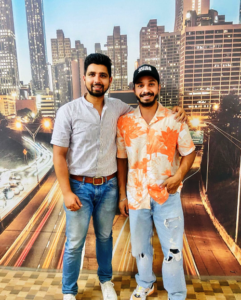Grey Workers
A Given the speed at which their workers are growing greyer, employers know surprisingly little about how productive they are. The general assumption is that the old are paid more in spite of, rather than because of, their extra productivity. That might partly explain why, when employers are under pressure to cut costs, they persuade the 55-year-olds to take early retirement. Earlier this year, Sun Life of Canada, an insurance company, announced that it was offering redundancy to all its British employees aged 50 or over “to bring in new blood”.
B In Japan, says Mariko Fujiwara, an industrial anthropologist who runs a think-tank for Hakuhodo, Japan’s second-largest advertising agency, most companies are bringing down the retirement age from the traditional 57 to 50 or thereabouts – and in some cases, such as Nissan, to 45. More than perhaps anywhere else, pay in Japan is linked to seniority. Given that the percentage of workers who have spent more than 32 years with the same employer rose from 11% in 1980 to 42% by 1994, it is hardly surprising that seniority-based wage costs have become the most intractable item on corporate profit-and-loss accounts.
C In Germany, Patrick Pohl, spokesman for Hoechst, expresses a widely held view: “The company is trying to lower the average age of the workforce. Perhaps the main reason for replacing older workers is that it makes it easier to ‘defrost’ the corporate culture. Older workers are less willing to try a new way of thinking. Younger workers are cheaper and more flexible.” Some German firms are hampered from getting rid of older workers as quickly as they would like. At SGL Carbon, a graphite producer, the average age of workers has been going up not down. The reason, says the company’s Ivo Lingnau, is not that SGL values older workers more. It is collective bargaining: the union agreement puts strict limits on the proportion of workers that may retire early.
D Clearly, when older people do heavy physical work, their age may affect their productivity. But other skills may increase with age, including many that are crucial for good management, such as an ability to handle people diplomatically, to run a meeting or to spot a problem before it blows up. Peter Hicks, who co-ordinates OECD work on the policy implications of ageing, says that plenty of research suggests older people are paid more because they are worth more.
E And the virtues of the young may be exaggerated. “The few companies that have kept on older workers find they have good judgment and their productivity is good,” says Mr Peterson. “Besides, their education standards are much better than those of today’s young high-school graduates.” Companies may say that older workers are not worth training, because they are reaching the end of their working lives: in fact, young people tend to switch jobs so frequently that offer the worst returns on training. “The median age for employer-driven training is the late 40s and early 50s,” says Mr Hicks. “It goes mainly to managers.”
F Take away those seniority-based pay scales, and older workers may become a much more attractive employment proposition. But most companies (and many workers) are uncomfortable with the idea of reducing someone’s pay in later life – although workers on piece-fates often earn less over time. So retaining the services of older workers may mean employing them in new ways.
G One innovation, described in Mr Walker’s report on combating age barriers, was devised by IBM Belgium. Faced with the need to cut staff costs, and have decided to concentrate cuts on 55-60-year-olds, IBM set up a separate company called SkillTeam, which re-employed any of the early retired who wanted to go on working up to the age of 60. An employee who joined SkillTeam at the age of 55 on a five-year contract would work for 58% of his time, over the full period, for 88% of his last IBM salary. The company offered services to IBM, thus allowing it to retain access to some of the intellectual capital it would otherwise have lost.
H The best way to tempt the old to go on working may be to build on such “bridge” jobs: part-time or temporary employment that creates a more gradual transition from full-time work to retirement. Mr Quinn, who has studied the phenomenon, finds that, in the United States, nearly half of all men and women who had been in full-time jobs in middle age moved into such “bridge” jobs at the end of their working lives. In general, it is the best-paid and worst-paid who carry on working: “There are”, he says, “two very different types of bridge jog-holders – those who continue working because they have to and those who continue working because they want to, even though they could afford to retire.”
I If the job market grows more flexible, the old may find more jobs that suit them. Often, they will be self-employed. Sometimes, they may start their own businesses: a study by David Storey of Warwick University found that, in Britain, 70% of businesses started by people over 55 survived, compared with an average of only 19%. To coax the old back into the job market, work will not only have to pay. It will need to be more fun than touring the country in an Airstream trailer, or seeing the grandchildren, or playing golf. Only then will there be many more Joe Clarks.
Questions 1-4
Do the following statements agree with the information given in reading passage? In boxes 1-4 on your answer sheet, write
TRUE if the statement agrees with the information
FALSE if the statement contradicts the information
NOT GIVEN if there is no information on this
1. Insurance company Sun Life of Canada made a decision that it would hire more Canadian employees rather than British ones in order to get a fresh staff.
2. Unlike other places, employees in Japan get paid according to the years they are employed.
3. Elder workers are laid off by some German companies which are refreshing corporate culture.
4. According to Peter Hicks, companies pay older people more regardless of the contribution they make.
Questions 5-6
Choose the correct letter, A, B, C, D, E.
According to the passage, there are several advantages to hire elder people, please choose TWO from below:
A their products are more superior to the young.
B paid less compared with younger ones
C run fast when there is a meeting
D have a better inter-person relationship
E identify problems in an advanced time
Questions 7-8
Choose the correct letter, A, B, C, D, E.
According to Mr.Peterson, Compared with elder employees, young graduates have several weaknesses in workplace, please choose TWO of them below:
A they are not worth training
B their productivity is lower than counterparts.
C they change work more often
D their academic criteria is someway behind elders
E they are normally high school graduates.
Questions 9-13
Choose the correct letter, A, B, C or D.
9. According to paragraph F, the firms and workers still hold the opinion that
A Older workers are more likely to attract other staff
B people are not happy if pay gets lower in retiring age.
C Older people have more retaining motivation than young people
D young people often earn less for their piece-rates salary.
10. SkillTeam that has been founded by IBM conducted which of the following movement:
A Ask all the old worker to continue their job on former working hours basis
B Carry on the action of cutting off the elder’s proportion of employment
C Ask employees to work more hours in order to get extra pay
D Re-hire old employees and kept the salary a bit lower
11. which of the followings is correct according to the research of Mr Quinn
A About 50% of all employees in America switched into ‘Bridge’ jobs.
B Only the worst-paid continue to work.
C More men than women fell into the category of ’bridge’ work.
D Some old people keep working for their motives rather than an economic incentive.
12. Which of the followings is correct according to David Storey:
A 70% of business is successful if hire more older people.
B The average success of the self-employed business is getting lower.
C Self-employed elder people are more likely to survive.
D Older people’s working hours are more flexible.
13. What is the main purpose of the author in writing this passage?
A there must be a successful retiring program for the old
B older people should be correctly valued in employment
C old people should offer more helping young employees grow.
D There are more jobs in the world that only employ older people
Travel Accounts
A There are many reasons why individuals have traveled beyond their own societies. Some travelers may have simply desired to satisfy curiosity about the larger world. Until recent times, however, trade, business dealings, diplomacy, political administration, military campaigns, exile, flight from persecution, migration, pilgrimage, missionary efforts, and the quest for economic or educational opportunities were more common inducements for foreign travel than was a mere curiosity. While the travelers’ accounts give much valuable information on these foreign lands and provide a window for the understanding of the local cultures and histories, they are also a mirror to the travelers themselves, for these accounts help them to have a better understanding of themselves.
B Records of foreign travel appeared soon after the invention of writing, and fragmentary travel accounts appeared in both Mesopotamia and Egypt in ancient times. After the formation of large, imperial states in the classical world, travel accounts emerged as a prominent literary genre in many lands, and they held especially strong appeal for rulers desiring useful knowledge about their realms. The Greek historian Herodotus reported on his travels in Egypt and Anatolia in researching the history of the Persian wars. The Chinese envoy Zhang Qian described much of central Asia as far west as Bactria (modern-day Afghanistan) on the basis of travels undertaken in the first century BC while searching for allies for the Han dynasty. Hellenistic and Roman geographers such as Ptolemy, Strabo, and Pliny the Elder relied on their own travels through much of the Mediterranean world as well as reports of other travelers to compile vast compendia of geographical knowledge.
C During the postclassical era (about 500 to 1500 CE), trade and pilgrimage emerged as major incentives for travel to foreign lands. Muslim merchants sought trading opportunities throughout much of the eastern hemisphere. They described lands, peoples, and commercial products of the Indian Ocean basin from East Africa to Indonesia, and they supplied the first written accounts of societies in sub-Saharan west Africa. While merchants set out in search of trade and profit, devout Muslims traveled as pilgrims to Mecca to make their hajj and visit the holy sites of Islam. Since the prophet Muhammad’s original pilgrimage to Mecca, untold millions of Muslims have followed his example, and thousands of hajj accounts have related their experiences. One of the best known Muslim travelers, Ibn Battuta, began his travels with the hajj but then went on to visit central Asia, India, China, sub-Saharan Africa, and parts of Mediterranean Europe before returning finally to his home in Morocco. East Asian travelers were not quite so prominent as Muslims during the postclassical era, but they too followed many of the highways and sea lanes of the eastern hemisphere. Chinese merchants frequently visited Southeast Asia and India, occasionally venturing even to east Africa, and devout East Asian Buddhists undertook distant pilgrimages. Between the 5th and 9th centuries CE, hundreds and possibly even thousands of Chinese Buddhists traveled to India to study with Buddhist teachers, collect sacred texts, and visit holy sites. Written accounts recorded the experiences of many pilgrims, such as Faxian, Xuanzang, and Yijing. Though not so numerous as the Chinese pilgrims, Buddhists from Japan, Korea, and other lands also ventured abroad in the interests of spiritual enlightenment.
D Medieval Europeans did not hit the roads in such large numbers as their Muslim and east Asian counterparts during the early part of the postclassical era, although gradually increasing crowds of Christian pilgrims flowed to Jerusalem, Rome, Santiago de Compostela (in northern Spain), and other sites. After the 12th century, however, merchants, pilgrims, and missionaries from medieval Europe traveled widely and left numerous travel accounts, of which Marco Polo’s description of his travels and sojourn in China is the best known. As they became familiar with the larger world of the eastern hemisphere – and the profitable commercial opportunities that it offered – European peoples worked to find new and more direct routes to Asian and African markets. Their efforts took them not only to all parts of the eastern hemisphere but eventually to the Americas and Oceania as well.
E If Muslim and Chinese peoples dominated travel writing in postclassical times, European explorers, conquerors, merchants, and missionaries took center stage during the early modern era (about 1500 to 1800 CE). By no means did Muslim and Chinese travel come to a halt in early modern times. But European peoples ventured to the distant corners of the globe, and European printing presses churned out thousands of travel accounts that described foreign lands and peoples for a reading public with an apparently insatiable appetite for news about the larger world. The volume of travel literature was so great that several editors, including Giambattista Ramusio, Richard Hakluyt, Theodore de Bry, and Samuel Purchas, assembled numerous travel accounts and made them available in enormous published collections.
F During the 19th century, European travelers made their way to the interior regions of Africa and the Americas, generating a fresh round of travel writing as they did so. Meanwhile, European colonial administrators devoted numerous writing to the societies of their colonial subjects, particularly in Asian and African colonies they established. By midcentury, attention was flowing also in the other direction. Painfully aware of the military and technological prowess of European and Euro-American societies, Asian travelers, in particular, visited Europe and the United States in hopes of discovering principles useful for the reorganization of their own societies. Among the most prominent of these travelers who made extensive use of their overseas observations and experiences in their own writing were the Japanese reformer Fukuzawa Yukichi and the Chinese revolutionary Sun Yat-sen.
G With the development of inexpensive and reliable means of mass transport, the 20th century witnessed explosions both in the frequency of long-distance travel and in the volume of travel writing. While a great deal of travel took place for reasons of business, administration, diplomacy, pilgrimage, and missionary work, as in ages past, increasingly effective modes of mass transport made it possible for new kinds of travel to flourish. The most distinctive of them was mass tourism, which emerged as a major form of consumption for individuals living in the world’s wealthy societies. Tourism enabled consumers to get away from home to see the sights in Rome, take a cruise through the Caribbean, walk the Great Wall of China, visit some wineries in Bordeaux, or go on safari in Kenya. A peculiar variant of the travel account arose to meet the needs of these tourists: the guidebook, which offered advice on food, lodging, shopping, local customs, and all the sights that visitors should not miss seeing. Tourism has had a massive economic impact throughout the world, but other new forms of travel have also had considerable influence in contemporary times. Recent times have seen unprecedented waves of migration, for example, and numerous migrants have sought to record their experiences and articulate their feelings about life in foreign lands. Recent times have also seen an unprecedented development of ethnic consciousness, and many are the intellectuals and writers in the diaspora who have visited the homes of their ancestors to see how much of their forebears’ values and cultural traditions they themselves have inherited. Particularly notable among their accounts are the memoirs of Malcolm X and Maya Angelou describing their visits to Africa.
Questions 14-21
Complete the table below. Write NO MORE THAN TWO WORDS from reading passage for each answer.
| Time | Destination | Traveler | Purpose |
| Classical era | Egypt and Anatolia | Herodotus | To obtain information on (14) …………….. |
| 1st century BC | Central Asia | Zhang Qian | To seek (15) ……… |
| Roman Empire | Mediterranean | Ptolemy, Strabo Pliny the Elder | To gather (16) ……… |
| Post-classical era | Eastern Hemisphere | Muslims | For business and (17) ……….. |
| 5th to 9th centuries CE | India | Asian Buddhists | To study with (18) …… |
| Early modern era | Distant places of the globe | The Europeans | To meet the public’s expectation for the outside |
| 19th century | Asia, Africa | Colonial administrator | To provide information on the (19) ……… they conquer |
| By the mid-century of the 1800s | Europe and the United States | Sun Yat-sen, Fukuzawa Yukichi | To learn (20) ………….for the reorganization of their societies |
| 20th century | Mass tourism | People from (21) ……..Countries | For entertainment |
Questions 22 – 26
Choose the correct letter, A, B, C or D.
22. Why did some people travel in the early days?
A to do research on themselves
B to write travel books
C to have a better understanding of other people and places
D to study local culture
23. The travelers’ accounts are a mirror to themselves,
A because they help them to be aware of local histories.
B because travelers are curious about the world.
C because travelers could do more research on the unknown.
D because they reflect the writers’ own experience and social life.
24. Most of the people who went to holy sites during the early part of the postclassical era are
A Europeans
B Muslim and East Asians
C Americans
D Greeks
25. During the early modern era, a large number of travel books were published to
A provide what the public wants.
B encourage the public’s feedback.
C gain profit.
D prompt trips to the new world.
26. What stimulated the market for traveling in the 20th century?
A the wealthy
B travel books
C delicious food
D mass transport
What Are Dreams?
A Thousands of years ago, dreams were seen as messages from the gods, and in many cultures, they are still considered prophetic. In ancient Greece, sick people slept at the temples of Asclepius, the god of medicine, in order to receive dreams that would heal them. Modern dream science really begins at the end of the 19th century with Sigmund Feud, who theorized that dreams were the expression of unconscious desires often stemming from childhood. He believed that exploring these hidden emotions through analysis could help cure mental illness. The Freudian model of psychoanalysis dominated until the 1970s when new research into the chemistry of the brain showed that emotional problems could have biological or chemical roots, as well as environmental ones. In other words, we weren’t sick just because of something our mothers did (or didn’t do), but because of some imbalance that might be cured with medication.
B After Freud, the most important event in dream science was the discovery in the early 1950s of a phase of sleep characterized by intense brain activity and rapid eye movement (REM). People awakened in the midst of REM sleep reported vivid dreams, which led researchers to conclude that most dreaming took place during REM. Using the electroencephalograph (EEG), researchers could see that brain activity during REM resembled that of the waking brain. That old them that a lot more was going on at night than anyone had suspected. But what, exactly?
C Scientists still don’t know for sure, although they have lots of theories. On one side are scientists like Harvard’s Allan Hobson, who believes that dreams are essentially random. In the 1970s, Hobson and his colleague Robert McCarley proposed what they called the “activation-synthesis hypothesis’” which describes how dreams are formed by nerve signals sent out during REM sleep from a small area at the base of the brain called the pons. These signals, the researchers said, activate the images that we call dreams. That put a crimp in dream research; if dreams were meaningless nocturnal firings, what was the point of studying them?
D Adult humans spend about a quarter of their sleep time in REM, much of it dreaming. During that time, the body is essentially paralyzed but the brain is buzzing. Scientists using PET and fMRI technology to watch the dreaming brain have found that one of the most active areas during REM is the limbic system, which controls our emotions. Much less active is the prefrontal cortex, which is associated with logical thinking. That could explain why dreams in REM sleep often lack a coherent storyline (some researchers have also found that people dream in non-REM sleep as well, although those dreams generally are less vivid.) Another active part of the brain in REM sleep is the anterior cingulate cortex, which detects discrepancies. Eric Nofzinger, director of the Sleep Neuroimaging Program at the University of Pittsburgh Medical Center, thinks that could be why people often figure out thorny problems in their dreams. “As if the brain surveys the internal milieu and tries to figure out what it should be doing, and whether our actions conflict with who we are,” he says.
E These may seem like vital mental functions, but no one has yet been able to say that REM sleep or dreaming is essential to life or even sanity. MAO inhibitors, an older class of antidepressants, essentially block REM sleep without any detectable effects, although people do get a “REM rebound” – extra REM – if they stop the medication. That’s also true of selective serotonin reuptake inhibitors (SSRIs) like Prozac, which reduce dreaming by a third to a half. Even permanently losing the ability to dream doesn’t have to be disabling. Israeli researcher Peretz Lavie has been observing a patient named Yuval Chamtzani, who was injured by a fragment of shrapnel that penetrated his brain when he was 19. As a result, he gets no REM sleep and doesn’t remember any dreams. But Lavie says that Chamtzani, now 55, “is probably the most normal person I know and one of the most successful ones.” He’s a lawyer, a painter and the editor of a puzzle column in a popular Israeli newspaper.
F The mystery of REM sleep is that even though it may not be essential, it is ubiquitous – at least in mammals and birds. But that doesn’t mean all mammals and birds dream (or if they do, they’re certainly not – talking about it). Some researchers think REM may have evolved for physiological reasons. “One thing that’s unique about mammals and birds is that they regulate body temperature”, says neuroscientist Jerry Siegel, director of UCLA’s Center for Sleep Research. “There’s no good evidence that any coldblooded animal has REM sleep.” REM sleep heats up the brain and non-REM cools it off, Siegel says, and that could mean that the changing sleep cycles allow the brain to repair itself. “It seems likely that REM sleep is filling a basic physiological function and that dreams are a kind of epiphenomenon,” Siegel says – an extraneous byproduct; like foam on beer.
G Whatever the function of dreams at night, they clearly can play a role in therapy during the day. The University of Maryland’s Clara Hill, who has studied the use of dreams in therapy, says that dreams are a ‘backdoor’, into a patient’s thinking. “Dreams reveal stuff about you that you didn’t know was there,” she says. The therapists she trains to work with patients’ dreams are, in essence, heirs to Freud, using dream imagery to uncover hidden emotions and feelings. Dreams provide clues to the nature of the more serious mental illness. Schizophrenics, for example, have poor-quality dreams, usually about objects rather than people. “If you’re going to understand human behavior,” says Rosalind Cartwright, a chairman of psychology at Rush University Medical Center in Chicago, “here’s a big piece of it. Dreaming is our own storytelling time – to help us know who we are, where we’re going and how we’re going to get there.” Cartwright has been studying depression in divorced men and women, and she is finding that “good dreamers,” people who have vivid dreams with strong storylines, are less likely to remain depressed. She thinks that dreaming helps diffuse strong emotions. “Dreaming is a mental-health activity,” she says.
Question 27 – 31
Reading passage has seven paragraphs, A-G. Which paragraph contains the following information?
27. Reference of an artist’s dreams who has versatile talents
28. The dream actually happens to many animals
29. Dreams are related to benefit and happiness
30. Advanced scientific technology applied in the investigation of the REM stage.
31. Questioning concern raised about the usefulness of investigation on dreams
Questions 32 – 34
Choose the correct letter, A, B, C or D.
32. What were dreams regarded as by ancient people?
A superstitious and unreliable
B communication with gods and chance to predict the future
C medical relief for children with an ill desire
D rules to follow as they fell asleep in a temple
33. According to Paragraph D, which part of the brain controls reasoning?
A anterior cingulate cortex
B internal cortex
C limbic system
D prefrontal cortex
34. What can we conclude when the author cited a reference for dreams in animals?
A Brain temperature rises when REM pattern happens.
B The reason why mammals are warm-blooded
C mammals are bound to appear with more frequent REM.
D REM makes people want to drink beer with more foam.
Questions 35-40
Look at the following people and the list of statements below. Match each statement with the correct person, A-G.
List of people
A Sigmund Freud
B Allan Hobson (Harvard)
C Robert McCarley
D Eric Nofzinger
E Jerry Siegel
F Clara Hill
G Rosalind Cartwright
35. Dreams sometimes come along with REM as no more than a trivial attachment
36. Exploring patients’ dreams would be beneficial for treatment as it reveals the unconscious thinking
37. Dreams help people cope with the difficulties they meet in the daytime
38. Decoding dreams would provide a reminder to human desire in the early days
39. Dreams are a body function to control strong emotion
40. Dreams seem to be as randomly occurring and have limited research significance.








